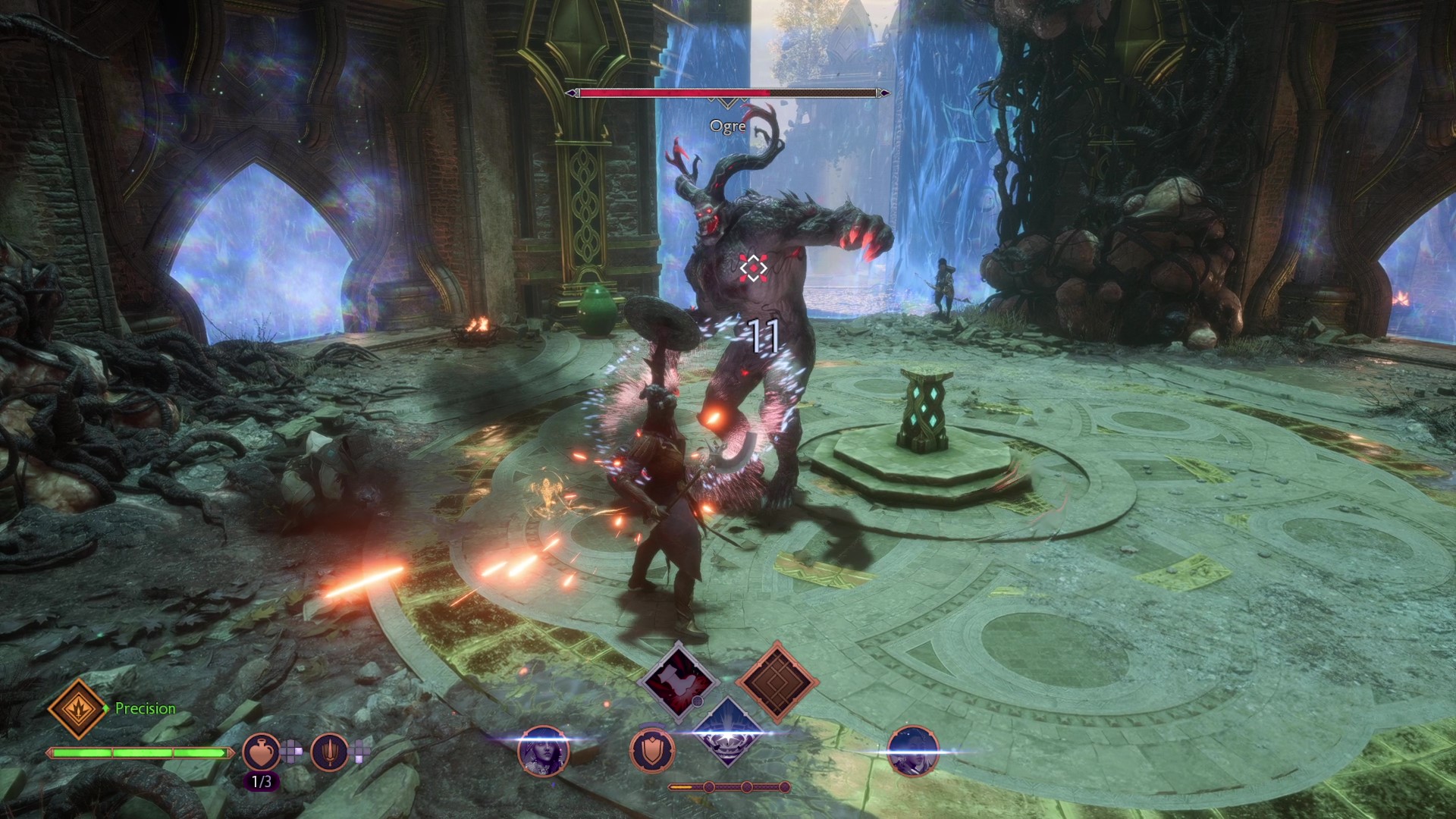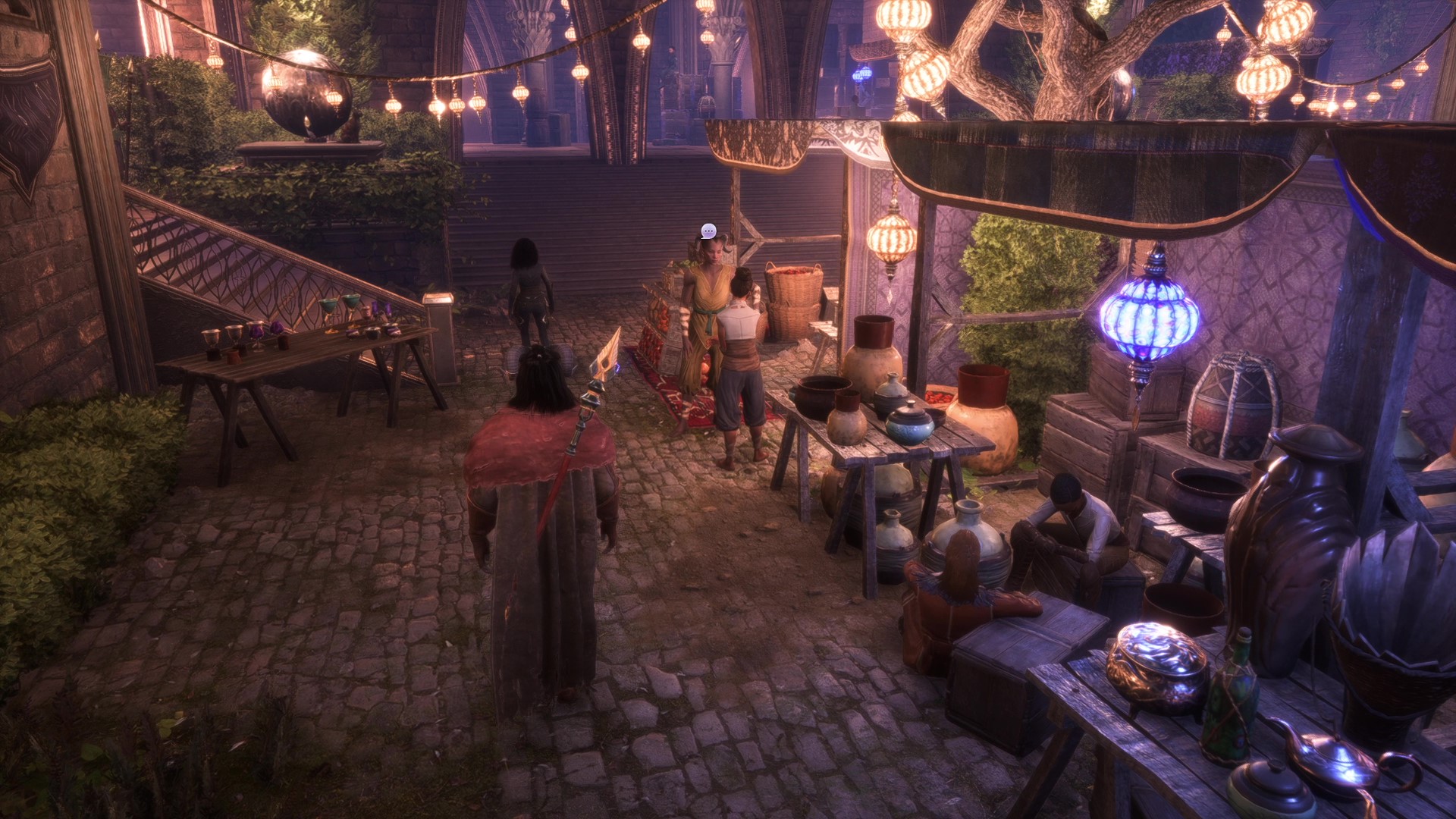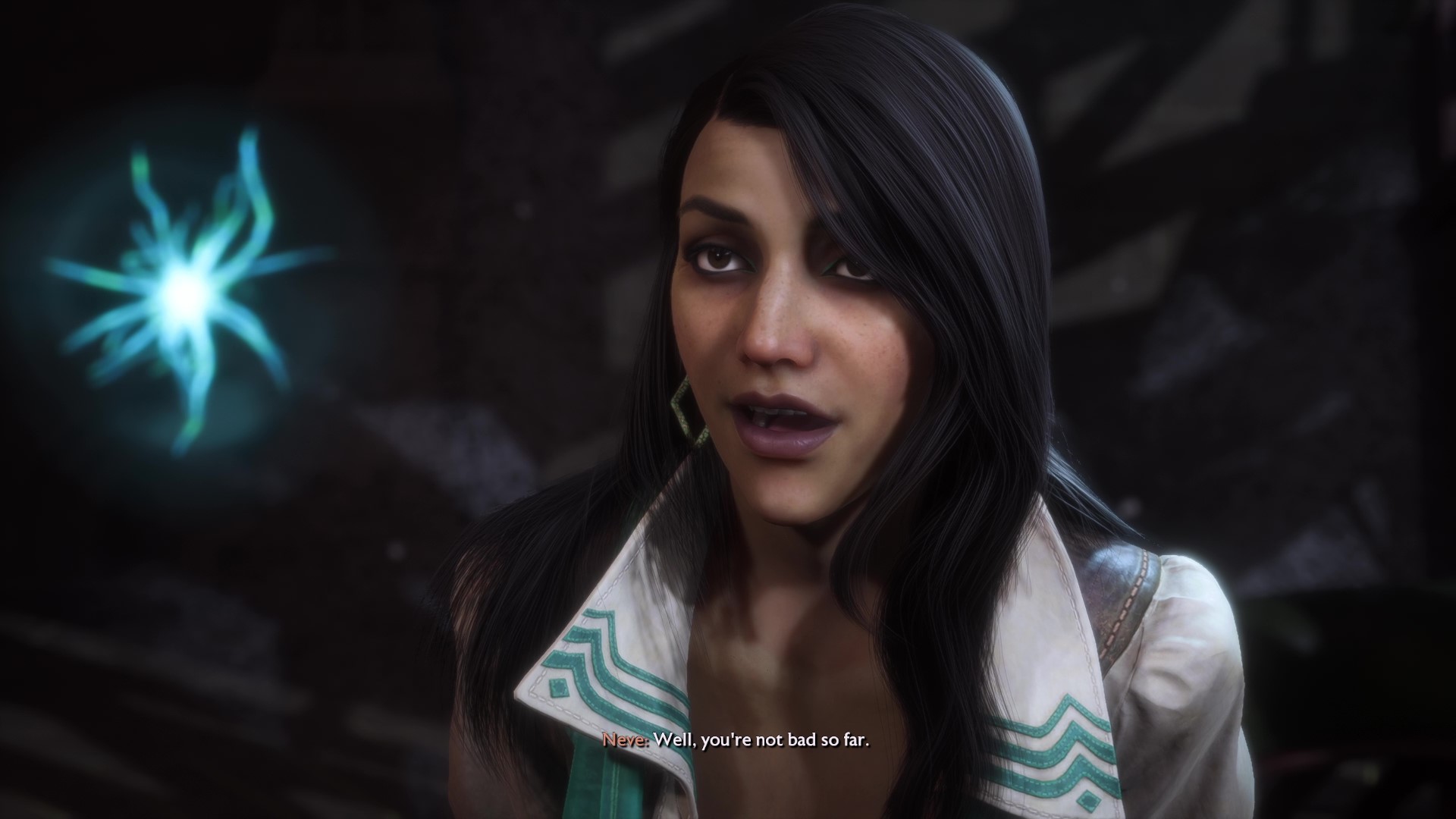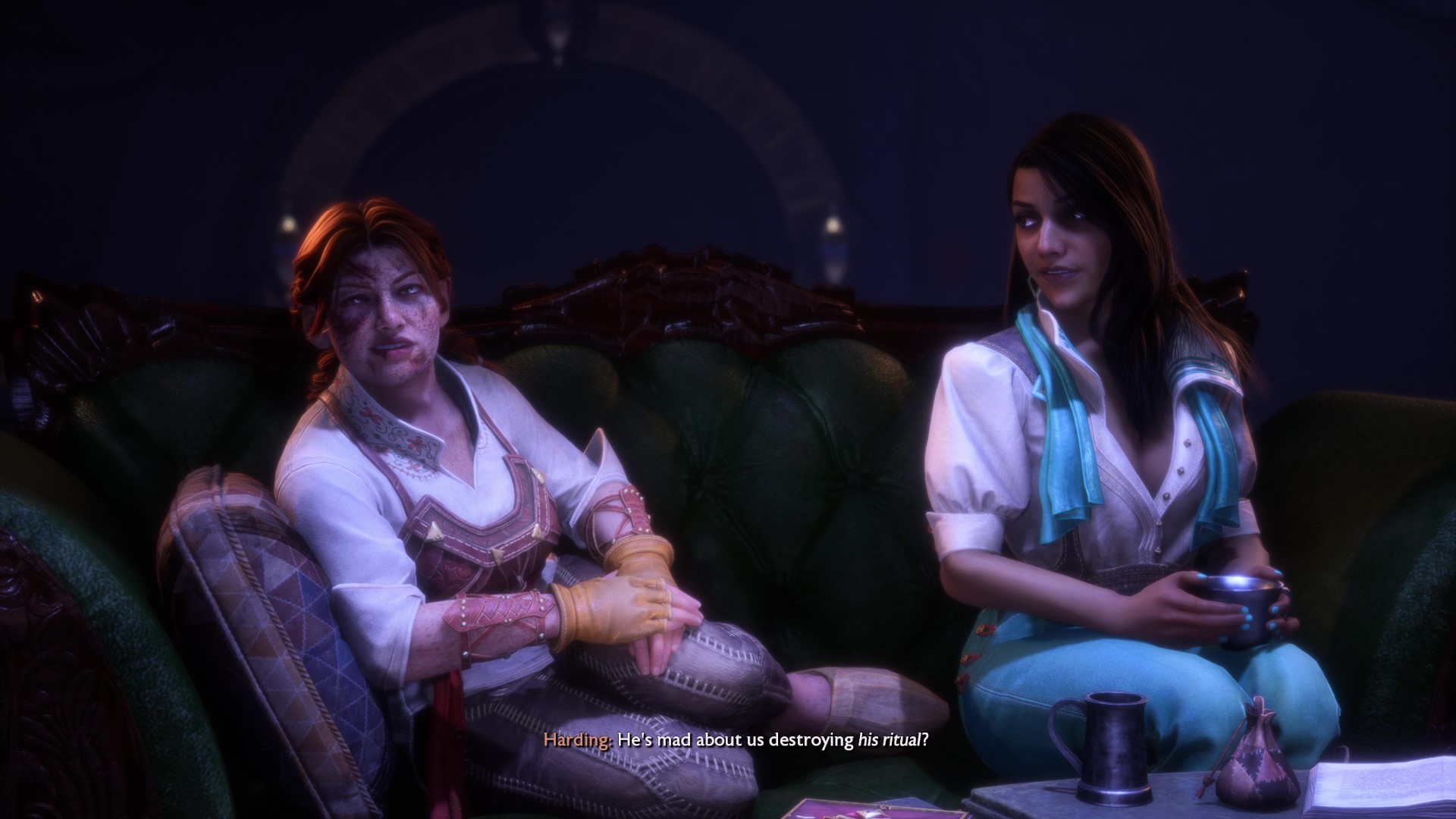Playing 6 hours of Dragon Age: The Veilguard gave me the faith its trailers couldn't: This is the BioWare comeback fans want
Dragon Age: The Veilguard won me over with its combat and polish, even if the story won't stop holding my hand.

Dragon Age: The Veilguard is going to be called BioWare's comeback. It isn't built on the multiplayer trend-chasing that plagued Anthem, and from the six hours I got to play during a hands-on preview event this month, Veilguard didn't seem to be the buggy mess that Mass Effect Andromeda was, either. It has all sorts of features that prove BioWare was listening to its players. And critically, it's BioWare doing what it's meant to be best at: gorgeous, intense, intimate RPGs.
All the marketing for The Veilguard so far has been polarizing: my fellow Dragon Age nerds at PC Gamer have been going back and forth on whether each new video heralds doom or redemption for the series. Prior to playing it I was trending towards the disillusioned side. Now, in spite of all the choices BioWare's made that I do still disagree with—the double-down on action combat, the shiny and poreless character designs, the cartoonish darkspawn—I believe The Veilguard is going to be a great return to the world I've loved for 15 years.
Setting the dragon stage
As is only right, I got to start in character creation, which is hands down the most detailed character creator BioWare's ever done. We've all seen and gushed over the silky hairstyles, another massive improvement for the series, but there are wild details like faction-dependent casual outfits and asymmetrical ear editing too. Regardless of my opinions on the overall visual style, there's no arguing it's gorgeous.

As soon as I close out of character creation, I catch my main character Rook mid-bar brawl trying to extract the location of an informant out of a bartender. Unlike the reveal trailer it inspired, playing through this scene immediately put a smile on my face when I realized Veilguard was winking into the camera. Here we are, kicking off a Dragon Age game with an interrogation again, but finally I'm the one demanding answers.
I'm presented with my first choice right away: Will Rook extract the information with charisma or with her fists? As anyone who's ever accidentally picked a way more aggressive dialogue option than intended in a Dragon Age game will be glad to hear, the repercussions are spelled out right above each dialogue option: "Try to convince the bar owner" or "Beat down the entire room."
One way or the other, Rook and fan-favorite sidekick Varric Tethras get the info they need and head out into the magical city Minrathous into the scene we saw in the gameplay reveal.
A combat convert
Though it isn't immediately obvious as I work through the training wheels tutorial combat—in which Rook and Varric trek through Minrathous fighting the spirits ransacking the city—I realize quickly after that the combat is fun. Like, 'I'm having a good time playing a warrior and I never play a warrior in a Dragon Age game' kind of fun.
The biggest gaming news, reviews and hardware deals
Keep up to date with the most important stories and the best deals, as picked by the PC Gamer team.

I can parry some magical projectiles with my shield or stagger enemies by parrying their melee attacks. I can create distance by dodging backwards and then close the gap with my "driving kick" skill that has me leap through the air. I can also sprint forward and land a special, heavier attack. In the first fight with a large pride demon, AOE attacks littering the ground keep me on my toes. I'm constantly tuned in to the action and the mobility I have around each fight is genuinely enjoyable.
It does feel like there's a high skill ceiling here for those who learn their kit and combos particularly well.
Some bits are sillier: the health and mana potion pots all over the world are so aggressively bright green and red they look out of a platformer from the '90s. I didn't ever click with the timed "quick recover" button press when knocked down in combat and rolled my eyes at the Captain America-style shield throw that warriors have as a basic ranged attack equivalent to a mage's magic laser and rogue's arrows. At times it's a bit too much superhero style for my dark fantasy series.
Cranking up the difficulty and switching classes in each new segment really kept me sweating. I was often pulling up the companion control wheel to fire off Neve's "time slow" spell or Bellara's healing ability. When BioWare said that it had gotten rid of full party member combat control in Veilguard I was miffed that they thought we couldn't handle it. But honestly they were right. After trying both a mage and a rogue, it really did take my full attention not to die in later boss fights.
The nodes of the skill tree are a mix of activated abilities and traits that unlock context-dependent combos. Things like "grappling spear" will harpoon and pull enemies in when activated while traits like "tumbling blades" let you attack after doing a combat roll or "counterblow" by attacking after a perfect defense. It does feel like there's a high skill ceiling here for those who learn their kit and combos particularly well.

I was among those disillusioned and disappointed by BioWare's swerve into action-heavy combat for Veilguard. But now that I cast my mind back, I realize… this is actually what I asked for. I've been tired of RPGs propped up by a skill hotbar for years now, hoping for a more fluid combat system where I could string together my own combos instead of rigidly planting my feet for each skill. I was mostly thinking of MMOs when I lodged those complaints, but now it's Dragon Age that's getting that fast, combo-based combat.
It still isn't what I would have chosen for the series, Dragon Age: Origins-loving curmudgeon that I've apparently become, but I have to admit that what BioWare set out to achieve with this combat system it's done very well. I'm a begrudging convert.
Another quality of Veilguard that BioWare has continually touted is how it allows you to customize your experience. My favorite example of customization is buried deep in the gameplay menu: the "wayfinding" settings. By default Veilguard holds your hand a lot. A minimap and quest log on screen are normal enough, but it also guides you with an objective marker constantly pointing you towards each door and path you should take.

I found it a bit oppressive, a real distraction from appreciating my surroundings, and was very pleased to find Veilguard lets me individually tweak lots of those elements by turning off visibility entirely or only showing briefly when I ping them with a button press. I decided to turn everything off, even the minimap, and explore each area naturally. Turning the visual noise off meant I could actually enjoy the most detailed, populated scenes I've ever seen in Thedas as I explored the city streets in Treviso and an incredible underwater prison while recruiting Lucanis. I appreciate the ability to say "actually, I've got this" and have Veilguard trust me to make that choice.
It's just a shame that The Veilguard's writing doesn't always extend me the same respect.
Conversation competencies

The quest writing in The Veilguard is desperate to chew my food for me. Not just with voiced hints in the usual 'maybe I should try that lever' style, but characters actively over-explaining themselves or dorky lines like "Everyone suit up. All hands for this one." It's not only quest dialogue either, but in how Veilguard recaps my choices for me.
There are points when I'm going to feel like the writers are sitting next to me on the couch talking through my first experience.
Multiple times as I played, text explanations popped up mid-cutscene to explain that the events I was seeing were caused by my decisions. Yeah: I made that choice two minutes ago! I'm grasping the cause and effect. Unlike those wayfinding settings, there isn't an "I understand how BioWare games work" toggle.
In a section I can't be specific about due to spoilers, a character tells me their opinion on something while a popup adds "This character now feels…" to make sure I notice this is a result of a prior conversation. I'm fine with 'character will remember that' style popups, but these reek of an insecurity that players won't 'get it.'

It's an understandable concern for the fourth entry in a series whose story starts with the consequences of a game that came out a decade ago. Though I'm sympathetic, I think there are points when I'm going to feel like the writers are sitting next to me on the couch talking through my first experience.
Where I don't feel talked down to are in the one-on-one conversations with my companions, thank goodness. Developing relationships with your party members, whether they're platonic or romantic, has always been a cornerstone of BioWare's RPGs and I was relieved to feel that old allure.
Instead of a castle in the mountains, our base of operations this time is The Lighthouse, a surreal collection of buildings floating in the magical void called The Fade. Each of your party members has their own floating abode that they'll fix up and personalize over the course of the game, with a handy little overhead light out front letting you know when they've got something new to talk about.

These encounters are everything I've always loved about Dragon Age. They're more naturally written conversations than the quest dialogue I have gripes about and they include emotional delivery from some great voice talent. I barely scraped the surface in the early sections of the game we were allowed to play but it made me eager to hear a lot more from the companions we've seen less of so far like Taash the dragon hunter and Davrin the Grey Warden.
The best bit is when my companions all get together. That artwork of all seven lounging around in The Lighthouse (above) is an actual scene. Initially, it's Rook sitting in an armchair while Harding and Neve share a sofa, all three discussing what to do after stopping Solas' magical Veil-tearing ritual. It feels lived-in and intimate, putting them in context together in a way I haven't quite felt in a Dragon Age game before. I suspect that setup will be a recurring one as more party members join the crew and larger discussions ensue. And now I'm getting completely into conjecture, but I wonder if my party members' poses in that scene will change as their relationships to me (or to each other) evolve.

At the end of our play session, BioWare told us that everything we'd played was from just Act 1 of The Veilguard. I'd been spirited through recruitment missions and boss fights and several genuinely gorgeous missions that didn't allow me to miss Dragon Age: Inquisition's open world design at all. It made a believer out of me with its combat and reassured me that the quieter moments with my party members between all the action would be worth waiting for.
I'll continue to nitpick, and some bits I'm just never going to come around on, but that comes with the fan territory. From what I've seen so far, there's a good chance The Veilguard will do the series proud.

Lauren has been writing for PC Gamer since she went hunting for the cryptid Dark Souls fashion police in 2017. She accepted her role as Associate Editor in 2021, now serving as self-appointed chief cozy games and farmlife sim enjoyer. Her career originally began in game development and she remains fascinated by how games tick in the modding and speedrunning scenes. She likes long fantasy books, longer RPGs, can't stop playing co-op survival crafting games, and has spent a number of hours she refuses to count building houses in The Sims games for over 20 years.

